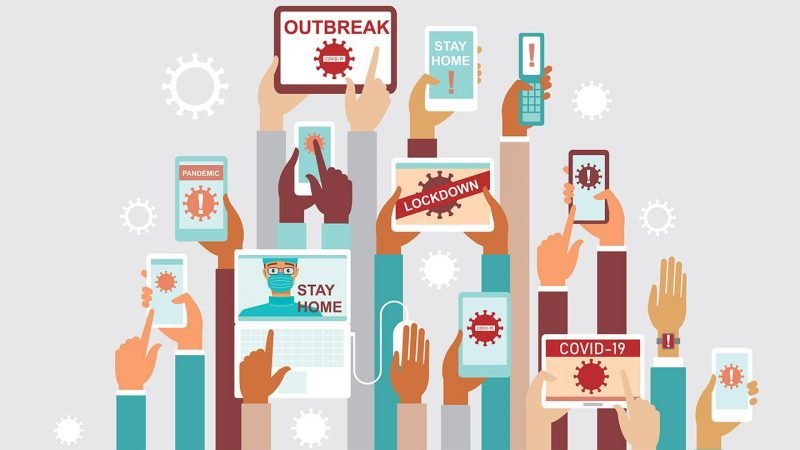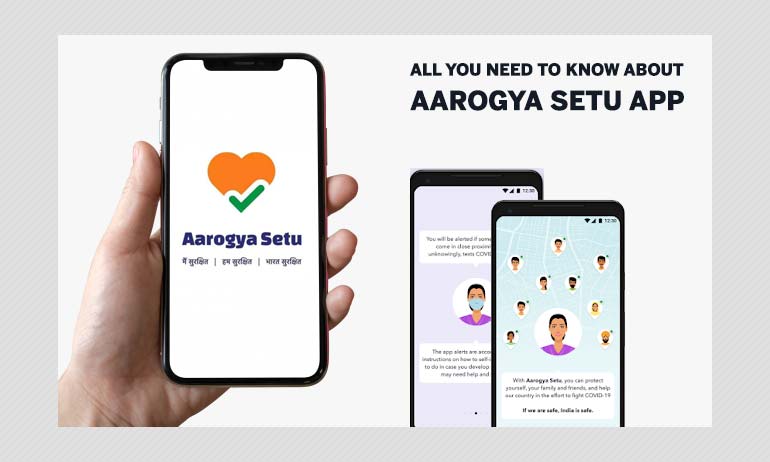Covid-19 and the Internet: A study on Truth and Misinformation Online

Misinformation on social media
The progress of the Internet has made verifying information a necessity amid the multitude of fake news and the degree of misinformation on social media. More and more individuals are using digital media networks like Facebook, Twitter, and WhatsApp as their primary source of information in place of traditional media. India has a burgeoning number of Internet and smartphone users with a digital population amounting to approximately 688 million active users as of January 2020. Smartphone use has made India a breeding ground for misinformation.
Misinformation about Covid-19 has increased as a consequence of the obscurity of the virus. Scientists continue to ascertain various aspects of the virus, to explain how it originated in Wuhan, how it spreads, as well as its nature and characteristics. Misinformation is defined as “an honest mistake in the spread of inaccurate information”. Disinformation is information that is “false and deliberately created to harm a person, social group, organisation or country” (UNESCO 2018). The term fake news can be affixed to both, a phenomenon that has gained increased media attention due to its global implications.
Disinformation can exacerbate contagion, and impede actions taken by governmental authorities while continuing to generate fear, uncertainty and distrust. Disinformation is polarising public debate on topics related to COVID-19; amplifying hate speech; heightening the risk of conflict, violence and human rights violations; and threatening long-terms prospects for advancing democracy, human rights and social cohesion.
As social media has evolved into a source of information and social communication, it is considered an incubator for misinformation. Content can become viral within minutes when it is shared and re-shared on various social media networks. Research stipulates that 59% of links are shared on Twitter without being read.
Social media users through information sharing practices, maintain accountability for broadcasting inaccurate or false information on digital media networks either deliberately or inadvertently. The distribution of misinformation by a user could be motivated by internal and or external factors. The internal factors could involve audience subjectivity and preference that later ascertain information biases. These internal factors may merge with external factors like social media algorithms which further determine the nature of information a user sees in their social feed, thereby entrapping the user in a filter bubble. These filter bubbles are known as an Echo chamber.

Fact-checking
Fact-checking networks, as well as social platforms like Facebook, Twitter and Google, are taking action and more responsibility to identify fraudulent content on these websites. Innovative mechanisms and policies have been developed to equip users with access to quality information.
- Facebook assigned warning labels on 50 million content related to COVID-19 in April 2020. According to Facebook, people do not click on content that has been marked with warning labels 95% of times.
- Facebook has also removed 2.5 million pieces of organic content related to the sale of masks, hand sanitisers and COVID-19 test kits. They adopted computer vision technology, which involved the use of algorithms to recognise images and videos to detect this content.
- In April 2020, Twitter’s automated systems “challenged” over 3.4 million accounts targeting manipulative discussions around COVID-19.
- Twitter also announced a similar policy to flag questionable content that may mislead or misinform users.
As the world confronts a global pandemic, it necessitates quality and responsible news broadcasting. This would serve to identify disinformation while also provide reliable health advocacy and strengthen community solidarity.

Positive aspect
To confront the challenge, it has become crucial for everyone with access to these networks to be proficient in identifying red flags and upskilling on fact-checking. The increase in false information is considered a challenge but can also serve as an opportunity for journalism to develop. While it contributes to public distrust, it also provides an opportunity for quality, ethical and responsible journalism to regain credibility.
While social media can propagate misinformation, it can also serve as a platform where false information can be corrected. Corrections could also take place generically on Facebook comments when users comment on posts containing misinformation. Information from friends may have a more significant influence since individuals trust those within their social circle.
Misuse by Political Actors
Social media platforms have demonstrated to be an incubator for incendiary political misinformation. This trend has been observed across the world, as individuals have become increasingly wary of the false information that is misleading voters (Guess et al. 2009). It has also become imperative to evaluate the role of the Government and Politicians who maintain influence over their electorate. These actors must be held accountable to suppress the upsurge of misinformation on social media, particularly in their correspondence with the voters.

Methods to tackle this paradox
Role of the Government
The Government has formulated strategies to curb the situation at hand with the initiations like the official chatbot on WhatsApp named ‘MyGov Corona News Desk’ that responds to queries about Covid-19, aiming to restrict rumours during the pandemic. It also seeks to avert chaos by generating awareness and providing access to news verification. Similarly, an official Telegram group was launched to address the same concerns.
On the other hand, the AYUSH ministry published reports regarding the prevention of coronavirus through homoeopathy, which was listed to be false by multiple scientific sources. Such a situation indicates the predicament of fake news as it originates from an official source. It generates an atmosphere of distrust since reliable institutions, and organisations get entangled in a web of misinformation.
Making Social Media networks accountable
New initiatives have been adopted by social networks like WhatsApp and Facebook to evolve into more reliable platforms of engagement. Facebook announced ambitions to develop an Artificial Intelligence system to investigate and deactivate accounts disseminating fake news. Similarly, Facebook and Twitter, has launched pop-ups and an information page which guides users to the resources of the WHO. WhatsApp has launched a ‘coronavirus information hub’ that intend to assist individuals in staying connected.
While efforts taken by social media networks must be acknowledged, it is premature to assume that these methods could efficiently tackle misinformation
Self-verification
The only efficient and effective way to limit the spread of misinformation is self-verification; therefore, people who consume the information, daily must educate themselves and acquire the skills to tackle it. Verifying the accuracy of the data can be achieved with an instant Google search, or double-checking information on websites like AltNews, MetaFact, Boom, Factly. Reverse image search is another method of fact-checking that involves running the sample image on which the system will then base its search.
Previous research indicates Sharing information on social media without verification is determined by Internet experience, information seeking abilities and belief in the reliability of the information. Another study established that ‘everyday users’ can lessen or mitigate the consequences of health misperceptions on social media. Thus, consumers who perform a central role in the propagation of misinformation are also the most efficient and effective in debunking fake news.
Digital literacy
The Government has taken steps to bridge the digital divide. These constitute of ‘National Digital Literacy Mission’ (NDLM) and ‘Digital Saksharta Abhiyan’ (DISHA) schemes that were implemented with a target to train 52.50 lakh candidates in digital literacy across the country including rural India. Similarly, in 2017, the “Pradhan Mantri Gramin Digital Saksharta Abhiyan (PMGDISHA)” was adopted to usher in digital literacy in rural India by covering six crore rural households.

Conclusion
Digital literacy interventions could be the only resolve to regulate the surge of misinformation. Literacy programmes could help mitigate the perceived efficiency of false news content and enable individuals to differentiate factual mainstream news. Previous studies confirm that large scale intervention can be efficient in reducing the perceived accuracy of false news stories, helping users more accurately gauge the credibility of news content they encounter on different topics or issues.
With a plethora of information available, it has become tough to identify truthful information. As social media platforms have been inefficient at filtering false information, therefore, individuals must depend on themselves and their social networks in consuming and spreading news. As digital development allows anyone to be a content creator, professional journalists substantiate their profession with expertise, ethics and accountability.
India is among the top 10 countries facing cyber-attacks. These incidents have increased manifold during the lockdown period. This has mandated strategic governmental interventions. The Government declared a new Cyber Security Policy, 2020, that aims to address the limitations of existing legislation concerning cybersecurity. Earlier this week, the UN has called on all stakeholders, to respond to the Infodemic, civil society leaders and influencers – to collaborate with the UN system, with Member States and with each other, to further strengthen their actions to disseminate accurate information and prevent the spread of mis- and disinformation.
[i] The Global Threat – Landscape Report
Beyond Fake News – 10 Types of Misleading News



















